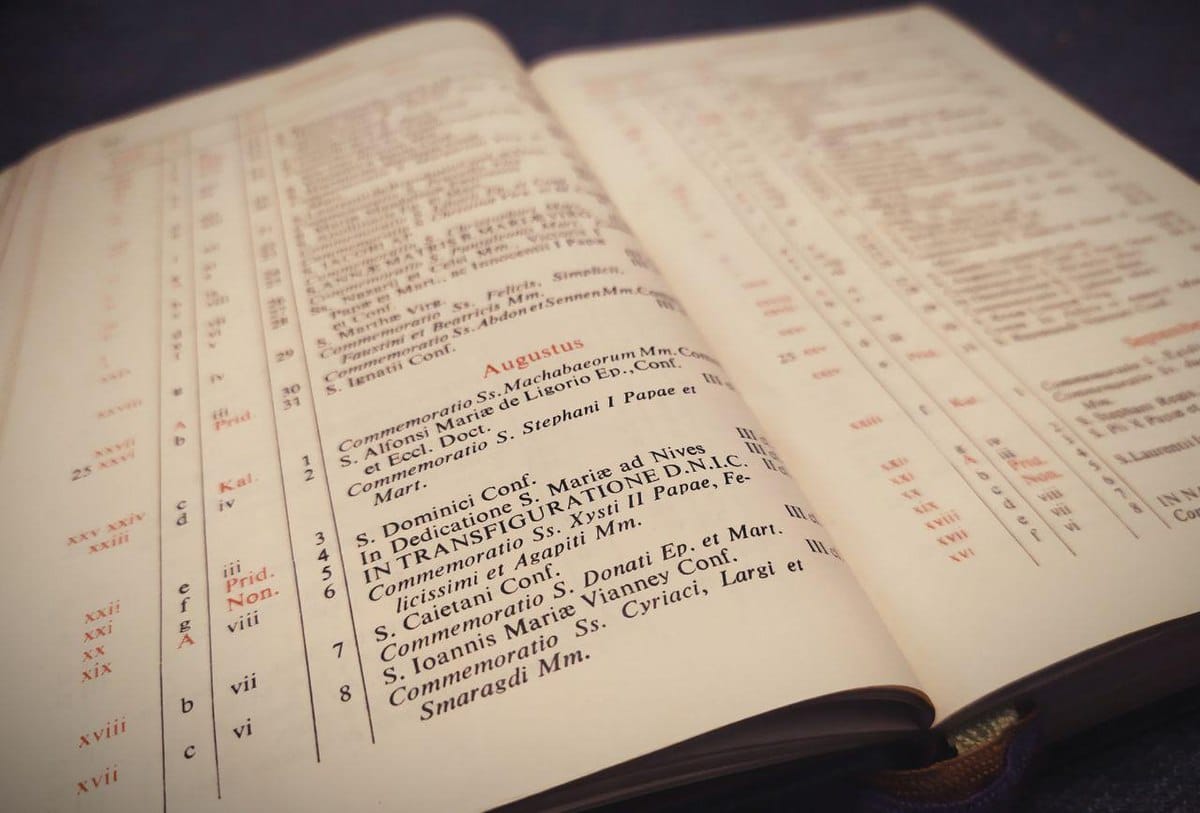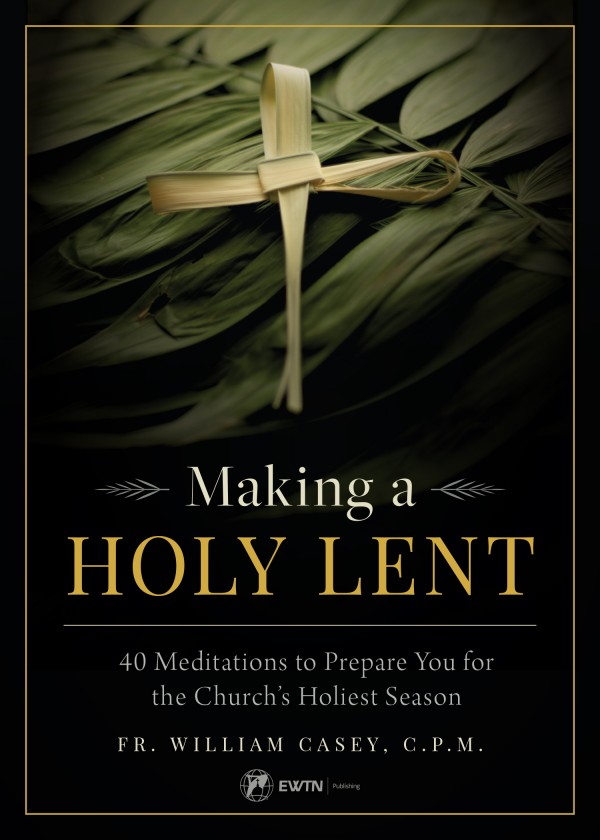
The celebration of significant people and events of the Catholic Church’s long history is expressed through the Church’s liturgical calendar and its various feast days. We are well acquainted with feast days assigned to episodes from our Lord’s life and to the saints, but feasts days can be assigned for many other things as well—the translation or finding of relics, the founding of a church, the contemplation of a theological mystery, the veneration of an angel, the commemoration of an apparition, and thanksgiving for victory in battle have all been the occasion liturgical feasts.
Indeed, there are so many feasts that it would be impossible to keep all of them. If you search for the saints’ feasts days on any particular date, you will see a slew of entries. For example, take September 6. The saints and blessed commemorated on September 6 include St. Magnus of Füssen, St. Frontiniano of Alba, Bl. Olinto Marella, Bl. Felipe Llamas Berrero, Bl. Bertrand of Garrigue, St. Bl. Tomás Ramírez Caba, St. Eleutherius the Abbot, Zechariah the Prophet, St. Augebert, St. Felix of Champagne, St. Maccallin, St. Cagnoald, St. Santican, St. Augustine of Sens, St. Gondulphus of Metz, Sts. Macarius and Faustus of Alexandria, St. Faustus of Syracuse, St. Beata, St. Eve of Dreux, St. Petronius, St. Cottidus, St. Arator, St. Eugene of Cappadocia, St. Consolata, St. Imperia, St. Liberato of Loro Piceno, as well as the Martyrs of Africa, killed by the Arian King Hunneric (Donatian, Fusculus, Germanus, Laetus, Mansuetus and Praesidius); also commemorated on this day are six martyrs of the Spanish Civil War.
With so many feast days, how do we determine what gets observed liturgically on a given day? For example, June 2 is the Feast of Sts. Marcellinus and Peter, notable martyrs of the early Church mentioned in the Roman Canon. But if June 2 falls on a Sunday—and if it is the first Sunday after Pentecost—then it is also Trinity Sunday. In such a case, Trinity Sunday would take precedence over the commemoration of the two martyrs—but why? How is one to know? Among so many feasts, how does any priest know what he is supposed to celebrate on any given day?
This is precisely why the Church has a ranking or classification of feast days. Each feast is assigned a certain “rank” that lets the celebrant know where the day stands within the vast hierarchy of feast days. It also determines which readings are used for Mass and the Liturgy of the Hours, as well as the liturgical color of the day. Prior to the liturgical reform of the 1960s, feasts were assigned “classes” in ascending order of their importance; after Vatican II, this class system was abolished, but the class system was so ingrained in Catholic liturgical thought we still hear of feasts, like Christmas, spoken of as a “Feast of the First Class.” As space does not permit us to study the intricacies of both the pre and post-conciliar ranking systems, we will regrettably have to confine ourselves to learning about the basics of the current system.
The highest ranked feast is called a Solemnity, what used to be known as a Feast of the First Class. Solemnities commemorate events from the life of Christ, or a saint who has relevance to the whole Church or a specific community. Solemnities will have their own propers and prayers and include a Credo and Gloria. Examples of universal solemnities are obviously feasts such as Easter, Pentecost, or the Immaculate Conception. But there are non-universal solemnities; for example, if you attend a parish named St. Gertrude, the Feast of St. Gertrude is a solemnity for your parish. The same applies for religious orders and countries; e.g., the Feast of St. Francis is a solemnity for Franciscans and the Feast of St. Patrick is a solemnity in Ireland. Solemnities which fall on a Sunday supersede the regular Sunday Mass unless they fall during Advent, Lent, or Eastertide. Every Holy Day of Obligation is a solemnity (but not every solemnity is a Holy Day of Obligation).
After solemnities comes what are commonly known as plain Feasts, or Feasts of the Second Class in the old system. In the first place, every Sunday liturgy is considered a feast, since only a solemnity replaces it. But other than Sundays, feasts commemorate lesser events in the lives of Christ or Mary or commemorate the Apostles, as well as some of the Church’s most eminent saints. Like a solemnity, a feast has unique propers and prayers and the Gloria is said, but not the Credo (unless it is a regular Sunday liturgy). A feast replaces the regular Sunday liturgy if it pertains to the Lord (for example, the Transfiguration) and falls on a Sunday during Ordinary Time, but otherwise it does not.
Next we have Memorials, also called commemorations (or Third Class Feasts in the old system). These are your typical feasts for saints of lesser importance. This is where you find most of your saint feasts, like the Feast of St. Clare or St. Boniface. Some memorials are obligatory while others are optional, depending on the region. An interesting quirk is that obligatory memorials that occur on weekdays in Lent lose their obligatory nature and become optional.
Fourth we have what is known as a Seasonal Weekday, in the old calendar known as I, II, or III Class Ferials. Seasonal means it falls during one of the Church’s liturgical seasons (Advent, Christmastide, Lent, or Easter). It is thus a weekday during one of these seasons upon which no higher ranking feasts occur.
Finally, we have Feria Days. Feria in Latin means “holy day,” and a Feria is the most basic holy day—a weekday in Ordinary Time upon which no solemnity, feast, or memorial falls (in the old system, these were IV Class Ferials).
To bring this back to our original inquiry on how priests know which feast is to be celebrated on a given day, he consults the General Roman Calendar, which contains a comprehensive list of the Church’s liturgical feasts along with their respective ranks. The rules for ranking feasts is found in the accompanying General Norms for the Liturgical Year and Calendar if the priest is uncertain which feasts should take precedence on which days.
Though revised at various points through history, the Church’s system of classification has brought order to what would otherwise be an unwieldy liturgical calendar, while simultaneously allowing flexibility for local variations and the personal choices of the celebrant. It thus harmoniously weaves the Church’s catholicity and diversity together in a single, beautiful calendrical tapestry.



